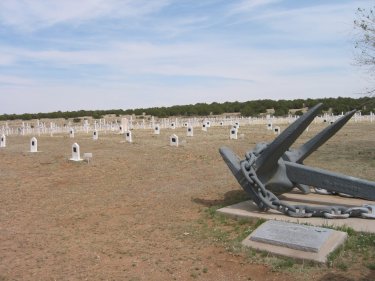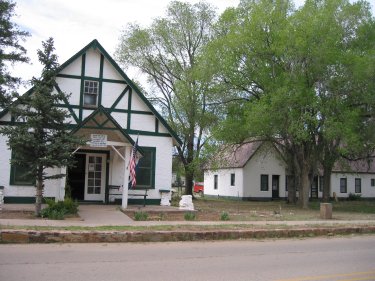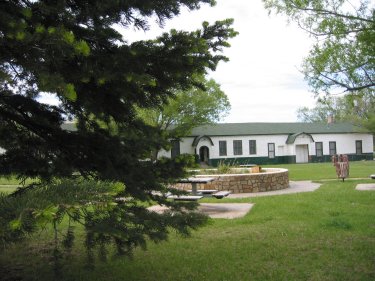Fort Stanton was established in 1855 as a frontier outpost, and was active as such until 1896. At the turn of the last century, it became a US Merchant Marine Hospital for tuberculosis. This, the only inland Merchant Marine Cemetery in the USA, lies just across from the Fort.

Volunteers of Fort Stanton, Inc. run a museum that is nearly the only portion of the Fort generally open to the public. It provides visitors with information about Fort Stanton’s diverse and lengthy life and the many roles it played in the history of Lincoln County. Because most of the Fort’s premises is occupied by CiviGenics (a drug rehab entity) and its desire for privacy for its substance abuse residents, the majority of the property is not open to the public except during special events. The portion of the Fort that is open to the public, and other portions that are hoped to be undergoing historic restoration, are managed in partnership with Fort Stanton, Inc. (501c3 non-profit); the Roswell Field Office of the Bureau of Land Management; the Lincoln County Historical Society, Inc. (501c3 non-profit); the Mescalero Apache Nation; the Ruidoso Valley Chamber of Commerce, among others.

Fort Stanton, Inc. is a non-profit organization dedicated to the preservation of this historically-valuable property for posterity. Their brochure reads: “Fort Stanton has led a long, interesting and diverse life. From its establishment during the Indian wars and involvement in the Civil War and the Lincoln County War, it served as a military stronghold. Although decommissioned near the end of the 19th century, it continued to function as a federal hospital, then as a state hospital. Today, Fort Stanton is about to change again. This time the cultural and historical heritage will be restored forever!”
For more information about Fort Stanton, Inc. go to their website: www.fortstanton.com

Their brochure also reads: “Fort Stanton [was] established May 1855 to control Apaches in the area. [It was] occupied by Confederate forces in August 1861, reoccupied by Kit Carson and five companies of New Mexico volunteers in October 1862. Fort Stanton brought stability to the area and encouraged settlement of Lincoln County. [It] was a major control factor during the Lincoln County War. [It] was home to [the famed Black] Buffalo Soldiers who helped control Apache bands led by Victorio and Geronimo in the 1880s.
“Fort Stanton is associated with several legendary figures, including Billy the Kid, who was incarcerated in the guardhouse; Territorial Governor Lew Wallace who is reputed to have written parts of his novel Ben Hur while relaxing in the quiet of the isolated post; and John J. “Black Jack” Pershing, commander of the American Expeditionary Forces in World War I, who served two tours of duty at the Fort in 1887 and 1889.”
The brochure goes on to tell visitors: “Fort Stanton was officially abandoned by the Army in 1896, turned into a Merchant Marine tuberculosis hospital by the Public Health Department in 1899; served [more than] 10,000 Merchant Marines with tuberculosis; was an internment camp for the 400 plus crew of a German luxury liner that was scuttled off the coast of Cuba in 1939; Fort Stanton was transferred to the state of New Mexico in 1953; was entered into the State Register of Historical Places in 1973; and entered the State’s most Endangered Buildings list in 1999.”
Fort Stanton Inc. strongly encourages, and seeks support efforts from the public to preserve and restore this only surviving fort in New Mexico. Donations and volunteers are always appreciated.
 Roswell Web Magazine
Roswell Web Magazine